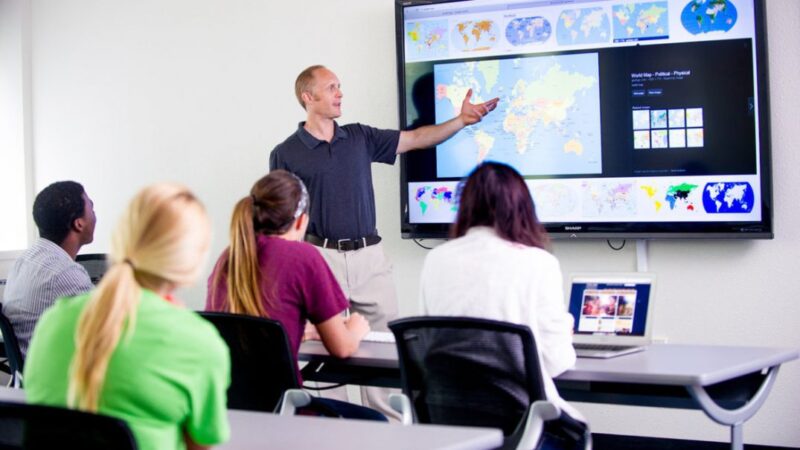The Internet has changed the face of contemporary education. While some of these changes result in negative outcomes in the teacher and learning process, many others affect the education sector positively. For instance, teachers are now exposed to innovative ways of plying their trade. Students have greater access to facilities and resources. Institutions of learning have prospects of reaching a wide range of students than before. Many more of these advantages are discussed in this article and how technology is changing contemporary education.
Changes in classroom processes
There have been changes in classroom patterns, particularly in secondary and tertiary institutions. Before the advent of the Internet and computer technology, the teacher/lecturer was at the centre of the entire process. In other words, she/he was viewed as the gravitational force of knowledge. However, with the coming of the Internet, this design has undergone some radical transformation. Now, there is hardly any piece of knowledge in any field that cannot be found online. Hence, students do not need to depend solely on the classroom teacher or lecturer. Students now have unfettered access to knowledge before and after teaching sessions. In fact, while in class, they can use their devices to look up facts available online. Teachers/lecturers are also taking advantage of this fact and trend to make their classrooms more interactive and lively, while they simply moderate the process. Pre-class research is usually encouraged, giving the students the opportunity to engage in healthy debates before the lecturer/teacher summarises.
Creates room for greater personalised learning
Each individual has some unique learning patterns suitable to them. While some are visual learners, others are kinesthetic, and so on. Since most traditional classrooms cannot cater for the learning needs of the variety of learners in every class, the Internet has proven to be a good respite in this regard. Learners can use their smartphones and other devices to access a variety of learning tools available online. Besides, lecturers and teachers can also access these facilities online and adapt them to suit the needs of each of their students.
More channels/opportunities for student-teacher communication

Gone are the days when the only channel of communication between the teacher and the student was the face-to-face method of communication on campus, and occasionally, via letters. Now, students have ample channels to communicate with their teachers. These channels include Zoom, email, Facebook Messenger, instant messaging, and so on. With these media of technology, students have little or no barrier to reach out to their teachers as and when needed. This means that there could be scheduled meetings for questions and answers sessions at any time of the day that will be favourable to the parties concerned.
The benefits of online examination

Closely linked to the aforementioned (channels of communication) are the benefits of a virtual examination. Many schools nowadays conduct entrance examinations for distant candidates online. Before now, if a flight is cancelled, a candidate calls in sick or some other reasons are given for not being able to attend a physical examination, such process will be postponed. But now, that doesn’t have to happen again. If one’s flight is cancelled, for example, all he/she needs to do is to notify the institution and have the examination scheduled online. Apart from this kind of examination, the online proficiency tests for different disciplines has been beneficial to many people. This has defeated the barriers of distance and the hurdles involved in travelling.
Availability of online education

The traditional classroom system dominated for centuries. The resources for teaching and learning were hardcopy books and a few videos which were seldom available to all categories of learners. However, the coming of the Internet has brought about softcopy texts and numerous resources available on websites, blogs, and so on. Secondary and tertiary institutions have also made provisions for online schooling. The advantages of these new trends are numerous. Notable among them is the ease of learning and access to education. Now, students and teachers do not have to be physically present in a room before teaching and learning can take place. The Internet facilitates instant and effective interaction over considerable distances. E-learning comes with the advantage of enhancing the confidence of the students and propelling them to self-learn
Also Read: 5-effective-techniques-for-teaching-and-learning
https://edidiongsunday246.medium.com/how-to-learn-anything-fast-and-remember-it-13b453252606










